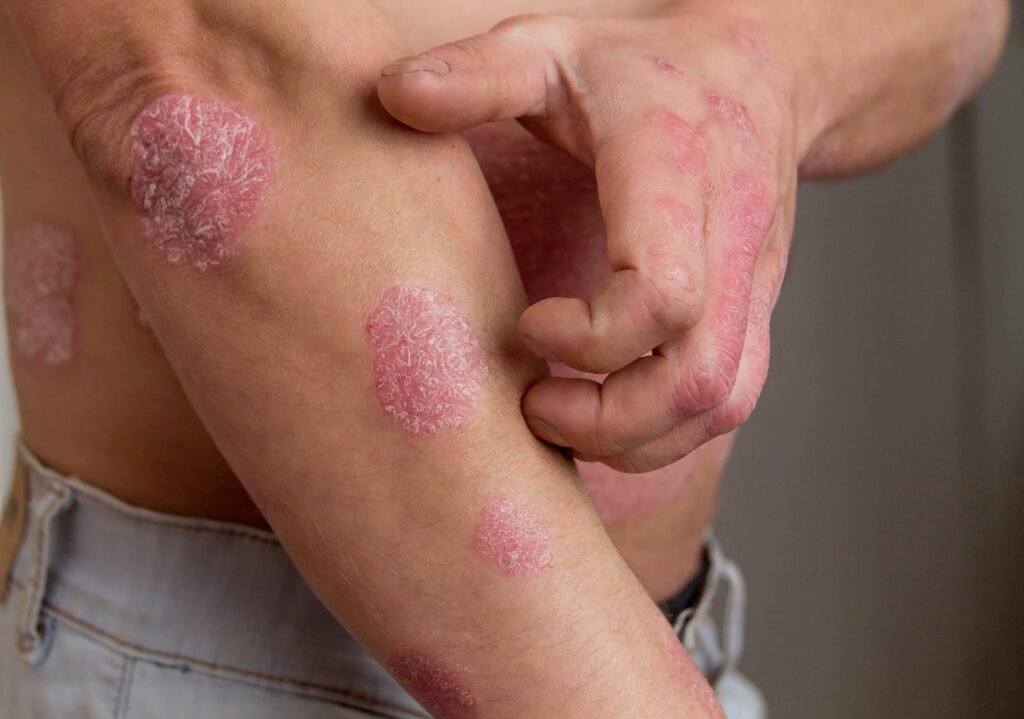Advancements in Systemic Treatments for Psoriasis: What You Need to Know
Psoriasis is a chronic inflammatory skin condition affecting millions worldwide. Recent advancements in systemic treatments—both traditional and biologic—have transformed management strategies for patients with moderate to severe psoriasis. This article delves into the evolution of systemic therapies and their comparative effectiveness and safety profiles, as recent studies shed light on these crucial aspects.
The Landscape of Psoriasis Treatment
Over the past years, the treatment landscape for psoriatic disease has evolved remarkably. While conventional systemic agents such as methotrexate, cyclosporine, and acitretin have long been staples, the introduction of biologics has revolutionized patient outcomes.
Currently, the U.S. Food and Drug Administration (FDA) has approved 13 biologic agents for moderating severe psoriasis, specifically targeting immune pathways involving:
- Interleukin (IL)-17
- Interleukin (IL)-23
- Interleukin (IL)-12
- Tumor Necrosis Factor (TNF)-α
Despite these advancements, comparisons of biologic and traditional systemic therapies could benefit from further clarification. Ongoing research aims to address these questions, ensuring that healthcare providers can make informed decisions based on the latest evidence.
Key Questions for Clinicians:
- How do biologics compare to traditional systemic therapies in terms of benefits and harms?
- Do certain biologics offer better safety profiles than others?
- How do these medications influence the risk of systemic infections?
- What patient-specific factors heighten this risk?
“Annual screening for tuberculosis and thorough patient monitoring are critical to maintaining safe, effective therapy,” highlights a leading dermatologist.
Effectiveness of Psoriasis Treatments
In a recent network meta-analysis published in 2023, researchers analyzed 179 studies comparing systemic treatments’ efficacy. Here’s what they discovered:
- All three treatment types—biologics, small molecules, and traditional systemic agents—demonstrated improved patient outcomes when compared to placebo.
- Anti-IL-17 treatments proved particularly effective, with significantly greater proportions of patients achieving a Psoriasis Area and Severity Index (PASI) score of 90.
Most Effective Biologics:
- Infliximab: Risk ratio (RR) 49.16
- Bimekizumab: RR 27.86
- Ixekizumab: RR 27.35
- Risankizumab: RR 26.16
The effectiveness was on par among these options, highlighting that treatment plans can be personalized based on individual patient needs.
Safety Profile Comparisons
Another crucial aspect to consider is safety. In the same network meta-analysis, researchers found no significant differences in serious adverse events (SAEs) between any of the treatments compared to placebo. Interestingly, methotrexate exhibited a lower risk for SAEs compared to many biologics.
Key Safety Insights:
- SAEs and Safety Profiles:
- No significant risk associated with methotrexate, older systemic agents, or anti-TNF biologics.
- Other biologics targeting IL-12, IL-23, or IL-17 were linked to reduced rates of serious infections.
- Tofacitinib showed an increased risk of serious infections (RR 2.89).
Note: Limitations in the analysis stem from the low number of events and the unique characteristics of studied populations, which may not reflect the average patients found in clinical practice.
Impact of Treatment Phases on Infection Risk
Infection risk can vary significantly based on treatment phases. For example, a systematic review at the 2025 AAD Annual Meeting found that IL-17 inhibitors increased serious infection risk during the maintenance phase of treatment.
- Key Findings:
- In the maintenance phase, serious infections doubled with IL-17 inhibitors.
- No significant differences were noted during the induction phase.
Clinical Recommendations:
Ongoing monitoring for patients on biologics is vital, especially during prolonged immunosuppression, to catch adverse reactions early.
Conclusion: Navigating the Evolving Landscape of Psoriasis Treatment
While recent findings highlight potential concerns regarding the infection risks associated with systemic therapies, serious infections among those using modern biologics are relatively rare.
“Annual screening for tuberculosis, thorough history taking, and close patient monitoring can significantly enhance treatment safety,” emphasize experts.
Understanding the complex interplay of benefits and risks associated with systemic therapies is essential. As the scope of research continues to expand, the quest for standardized, high-quality studies will remain pivotal in guiding treatment decisions for individuals with psoriatic disease.
For further insights into specific therapies, visit National Psoriasis Foundation and explore additional resources on psoriasis management and innovations.


